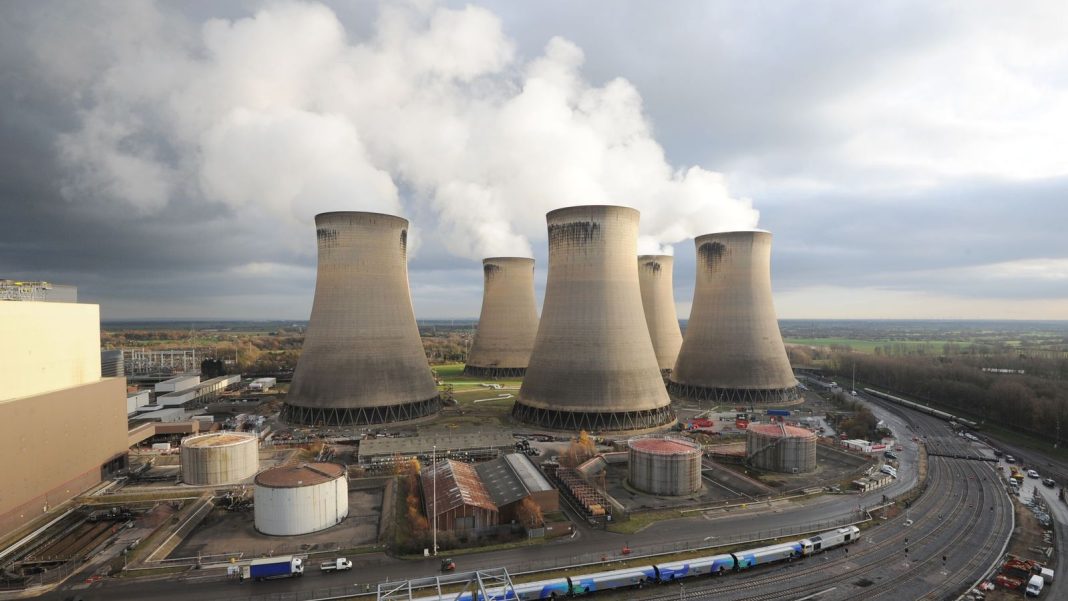The UK government is backing new financial support for a controversial form of electricity that is generated by burning wood pellets.
The news has been welcomed by the energy industry, but it could contradict advice from its climate advisers.
The UK classes biomass as clean power, because new trees are planted to absorb the carbon dioxide released from burning the wood pellets – though this science is disputed.
Its renewable status entitles it to government subsidies of around £600m a year, under a scheme due to expire in 2027.
The government has today launched a consultation about extending the subsidies from 2027 to 2030.
The consultation includes options for no financial support, but the government has identified four “preferred options” that involve some form of continued financial support.
But its climate advisers, the Climate Change Committee (the CCC), last year warned that the biomass subsidies no longer provided value for money.
The CCC does support the eventual addition of technology to the biomass plant to capture the emissions and store them underground, known as bioenergy with carbon capture and storage (BECCS). However, this will not be ready until at least 2030.
The advisers say the UK will need BECCS to offset emissions from other sectors that are very hard to green, such as aviation.
Please use Chrome browser for a more accessible video player
2:00
UK households and businesses installed more heat pumps and solar panels than ever before, according to the body that accredits low-carbon products.
The government says that without subsidies to bridge the gap between 2027 and 2030, large-scale biomass plants would lose a financial incentive to generate, and the UK could lose the 7% of electricity that it gets from biomass.
A spokesperson for the energy security and net zero department said: “No decisions have been taken, and the Government is focussed on protecting people’s bills and any potential support would be subject to a rigorous value for money assessment – ensuring that any tax and bill payer money is spent wisely.”
Will Gardiner, CEO of Drax, which operates a major biomass station in Yorkshire, said the consultation should help ensure “biomass power stations, like Drax Power Station, continue to play an important role in the UK’s energy security, while transitioning to BECCS and helping the UK to meet greenhouse gas reduction targets”.
Emma Pinchbeck, chief executive of Energy UK, said: “Drax Power Station is the largest provider of renewable electricity in the country.
“Fitting carbon capture technology to it could remove millions of tonnes of carbon dioxide every year and ensure it continues to play an important part in supporting the country’s energy security.”
But not everyone agrees on the environmental benefit of biomass plants such as Drax’s.
Many scientists and politicians question whether the carbon dioxide released from burning wood is fully reabsorbed by new trees.
Selaine Saxby, Conservative MP, said the base load of power from Drax is useful.
But she warned: “Given the associated pollution, and potential non-renewable nature of its inputs, it should not be an energy source we continue to subsidise, and like other polluting sources we should look to reduce our dependence on it, not increase it.”
Think tank Ember said that as biomass is not carbon neutral after all, it is not convincing that BECCS would deliver the further removal of carbon dioxide that is hoped.
Tomos Harrison, analyst at Ember, said: “The negative emissions promised by Drax are based on the assumption that burning wood is carbon neutral, but there’s a growing body of evidence that this is not the case.
“If Drax’s BECCS project goes ahead, the UK energy consumer could be locked into decades of even higher bills without any guarantee that the emissions reductions they are paying for are actually being achieved.”
Drax says BECCS could lower the cost to the public compared with other forms of carbon removals.







